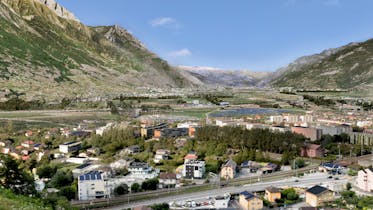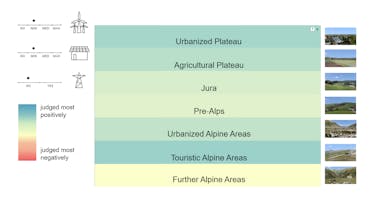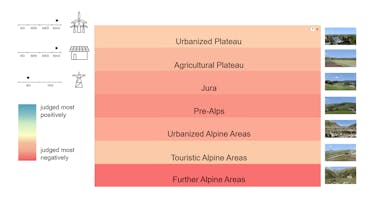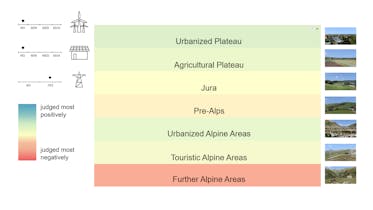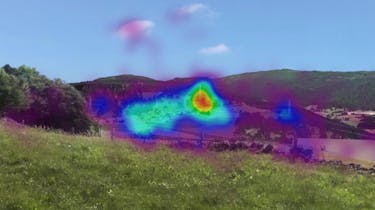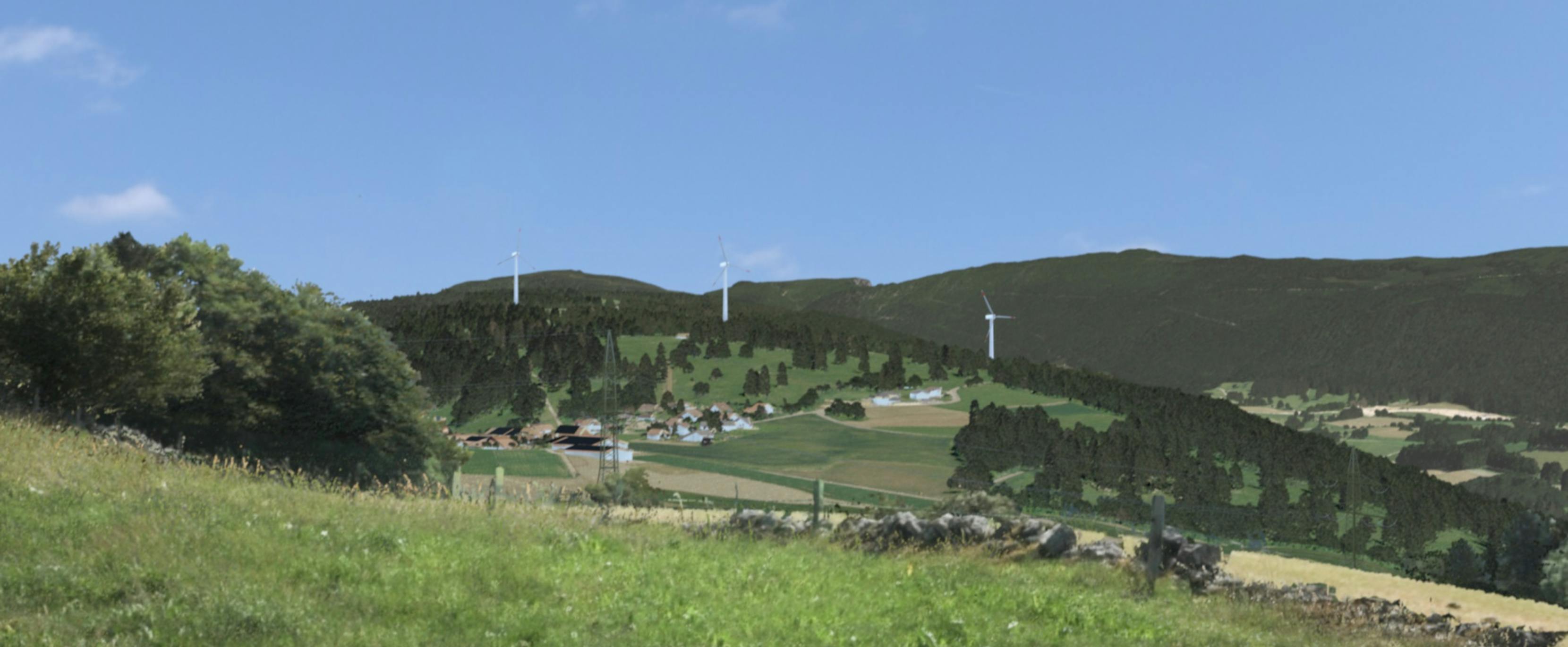
The grid needs to be upgraded and expanded in line with demand to ensure the successful implementation of the Energy Strategy 2050. That much is clear. But grid projects often take longer than planned. Why is that? A lack of public acceptance is one of the main reasons. Besides possible health risks and noise, Swiss citizens consider the influence on the landscape to be the main problem with extra-high-voltage lines. To take a closer look, the «Energyscape» research project at the ETH Zurich and the Swiss Federal Institute for Forest, Snow and Landscape Research (WSL), supported by Swissgrid, examined the influence of energy installations on the perception of Swiss landscapes. In an interview, Dr Ulrike Wissen Hayek, head of the research project, explains the course of the project and the surprising findings documented by the project team.
What exactly did you investigate in the «Energyscape» project?
Based on the current state of research, we know that the perception of the change to the landscape has a considerable influence on public acceptance. In the «Energyscape» project, we focussed on the question of how the perception and appreciation of landscapes change when renewable energy installations and extra-high-voltage lines are added.
How did you measure the perception of changes to the landscape?
We carried out a representative online survey across Switzerland. For each scenario, participants were shown two possible landscapes with renewable energies and extra-high-voltage lines. They then had to choose the landscape that they preferred. We used seven different landscapes characteristic of Switzerland for the study. A laser scanner (RIEGL VZ-1000) was used to capture the representative locations for the landscapes and these were then visualised in 3D. In the landscape scenes, participants were shown no as well as a small, medium and large number of wind turbines and photovoltaic installations in each case. They were also shown the landscape either with or without an extra-high-voltage line.
We carried out a laboratory experiment to examine the perception of these kinds of landscapes in detail. To do so, we measured the unconscious responses to visual changes to landscapes caused by renewable energy systems. Visual stimuli trigger physiological responses, that is to say, a response in specific processing regions of the brain. These physiological responses can be measured, for example through skin conductance. The differences in the skin conductance indicate the extent to which a person’s excitation or attention changes when viewing the landscape scenarios. We also evaluated the perception of the landscape structure.
How were the changes to the landscape perceived?
What is surprising is that the public prefers a landscape with a small number of photovoltaic installations on roofs and façades over a landscape without photovoltaic installations. Even a few wind turbines only have a slightly negative impact on the evaluation. The evaluation of the landscape only starts to deteriorate dramatically when a large number of photovoltaic installations are present, including in open spaces, or in the presence of a medium to large number of wind turbines. By contrast, extra-high-voltage lines always have a negative impact on the evaluation of the landscape.
The study also shows that the landscape that contains only extra-high-voltage lines received a much lower evaluation than the landscape with an extra-high-voltage line and a few to a medium number of photovoltaic installations. Adding a few wind turbines to a landscape with a small to medium number of photovoltaic installations also does not lead to a significant change in perception. The picture only changes once more installations are added.
The type of landscape plays an important role. In the more populated lowlands and in popular tourist destinations in mountain regions, renewable energy infrastructure is evaluated more positively than in other types of landscapes. The perception in mountain regions that are currently free of infrastructure is much more negative than in other types of landscapes. The landscape in these natural mountain regions seems less harmonious when energy infrastructure is added.
Did you analyse extra-high-voltage lines in detail?
As part of a Master’s thesis, we used an eye tracking study to take a closer look at the acceptance of extra-high-voltage lines depending on the type of landscape as well as wind turbines. The acceptance of extra-high-voltage lines was higher in more populated areas (mountains and lowlands) than in natural regions (Jura and Alpine foothills). We were not able to identify a correlation between wind turbines and extra-high-voltage lines. The disturbance caused by an extra-high-voltage line is independent of the number of wind turbines.
The type of landscape is highly relevant. Did you investigate this influence that the type of landscape has on the perception of the energy infrastructure more closely?
The laboratory experiment provided some very interesting results in this respect. By measuring skin conductance, we were able to measure that the quantity of renewable energies influences the physiological response. A large number of installations triggers a much greater physiological response, particularly in Jura and in the infrastructure-free mountain regions, while the perception in the more populated lowlands barely changes with or without renewable energy infrastructure. The perceived coherence of the landscape increases across all types of landscapes with a small number of energy installations, except for the infrastructure-free mountain regions, while perceived coherence falls for all types of landscapes with a large number of energy infrastructure installations.
The results of «Energyscape» can be summarised as follows: combinations of wind and solar energy installations in a landscape are assessed more positively than the exclusive use of wind turbines. Overhead lines combined with solar energy installations – and even a few wind turbines – are assessed more positively or the same as only overhead lines. The type of landscape plays an important role in acceptance.
Findings for use in practice
«Energyscape» identifies a clear conflict of objectives for Swissgrid, between landscape acceptance and acceptance by directly affected citizens. From a landscape perspective, the public prefers an extra-high-voltage line in the populated lowlands. But here the acceptance of directly affected citizens is lower as they do not want a line near residential areas. As a result, new lines are diverted to the countryside, where the landscape acceptance is lower but only isolated residential buildings or farms are present. However, here the lines come into contact with landscape and conservation areas, which require special care and attention. In a further project in collaboration with the ETH Zurich, the 3D Decision Support System to support the planning of extra-high-voltage lines, we tackle the question of the route that a new line should take. It considers precisely this conflict of objectives. The results of this research project will be covered in an upcoming blog post.




